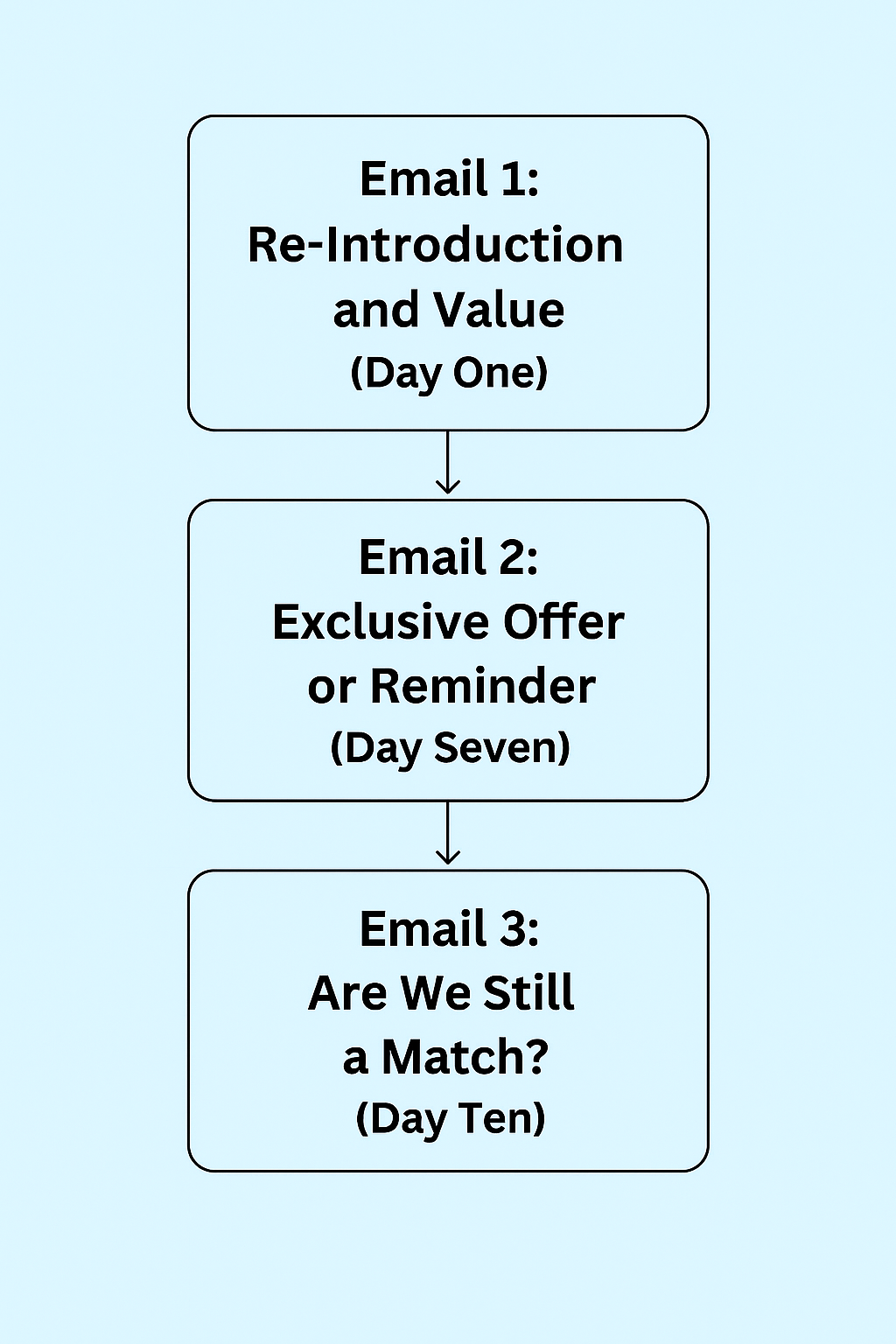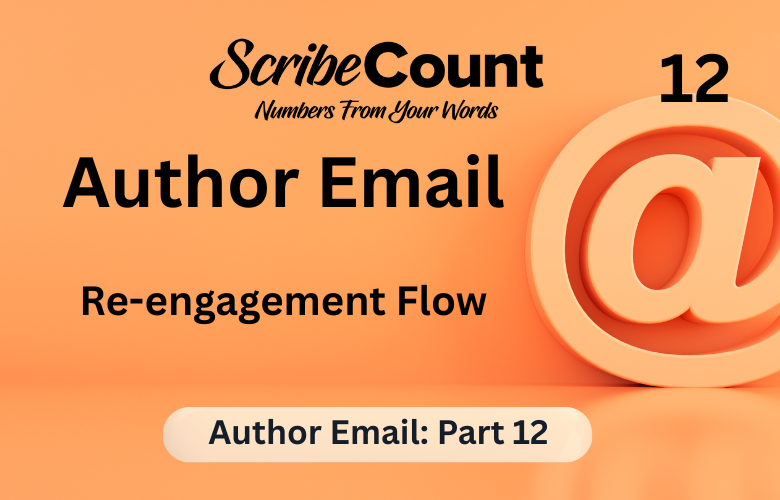Re-Engagement Flow for Indie Authors: Winning Back Cold Subscribers
Every email list has them: subscribers who stopped opening, stopped clicking, or simply forgot who you are. That’s not failure—it’s reality. But before you delete these dormant readers or let them fade into your digital void, you have one more tool to try: the Re-Engagement Flow.
This sequence is designed to revive interest, reintroduce your voice, and give readers a chance to reconnect—or unsubscribe cleanly. A well-structured Re-Engagement Flow helps maintain a healthy list, improve your sender reputation, and reawaken lapsed fans who just needed a timely reminder of why they joined in the first place.
Why Re-Engagement Matters
Inactive subscribers are more than just dead weight. When a large portion of your list stops opening your emails, your overall engagement rate drops, which can trigger spam filters and damage your sender reputation. This means your future emails—even to active readers—may land in junk folders.
But beyond technical metrics, re-engagement is about the human element. Many readers don’t intentionally tune out. Life happens. They change devices, miss a few emails, or simply get overwhelmed. A gentle, well-timed reminder can bring them back into your orbit.
If you can re-engage even a small percentage of cold subscribers, you’ll see an uptick in clicks, reviews, and sales. According to email marketing platform MailerLite, well-executed re-engagement campaigns can revive between 10–25% of inactive subscribers, depending on list size and quality. One indie author reported that a three-email re-engagement sequence recovered 18% of her dormant list—leading to a measurable bump in both book sales and ARC reviewers.
These readers already showed interest once—it’s worth one last effort to win them back. When a large portion of your list stops opening your emails, your overall engagement rate drops, which can trigger spam filters and damage your sender reputation. This means your future emails—even to active readers—may land in junk folders.
But beyond technical metrics, re-engagement is about the human element. Many readers don’t intentionally tune out. Life happens. They change devices, miss a few emails, or simply get overwhelmed. A gentle, well-timed reminder can bring them back into your orbit.
If you can re-engage even a small percentage of cold subscribers, you’ll see an uptick in clicks, reviews, and sales. These readers already showed interest once—it’s worth one last effort to win them back.
The Anatomy of a Re-Engagement Flow
A Re-Engagement Flow is typically a 3–4 email sequence spaced over 7 to 10 days. The tone should be warm, personal, and a bit nostalgic. You’re reminding readers of what they once liked—and offering them a reason to stay.
Email 1: Re-Introduction and Value
Subject: "Still interested in books like this?"
This first email reintroduces yourself and your author brand. Remind the subscriber who you are, what you write, and why they signed up in the first place. Include a value-driven offer such as:
- A free short story
- A sneak peek at your next release
- A curated list of your most popular books
Keep it warm and authentic. Ask if they still want to hear from you—and let them know how to update their preferences.
Email 2: Exclusive Offer or Reminder
Subject: "A little something for you…"
This second message sweetens the deal. Offer something special to encourage interaction:
- A time-limited discount on a top book
- A new reader magnet not available elsewhere
- A behind-the-scenes story or author Q&A
The goal here is to re-engage with value—not pressure.
Email 3: Are We Still a Match?
Subject: "Should I take you off the list?"
This final email should be polite but clear. Ask if they want to remain subscribed and let them know this is the last call. Offer one click to stay, one click to unsubscribe. You might be surprised how many people click “Stay”—and thank you for asking.

What to Include in Each Email
Every email in a Re-Engagement Flow should:
- Use your author voice to maintain brand consistency
- Clearly state who you are and why the reader is hearing from you now
- Offer something valuable with no strings attached
- Provide a visible and respectful way to unsubscribe
Avoid guilt trips or hard sells. This is a soft-touch flow designed to reconnect, not convert at all costs.
Tools to Help You Set It Up
Most email platforms allow you to build a re-engagement segment using basic criteria such as:
- Subscribers who haven’t opened the last 8–10 emails
- No clicks in the past 60–90 days
Once identified, these subscribers can be funneled into an automated sequence. Recommended tools:
- ConvertKit: Offers visual automation and cold-subscriber filtering
- MailerLite: Simple workflows with built-in re-engagement templates
- FloDesk: Stylish emails and workflows with fixed pricing
- SendFox: Budget-friendly with straightforward automation
Use link tracking to see who clicks, who opens, and who stays. Tag re-engaged readers for future targeting.
Clean-Up After the Flow
Once the sequence ends, take action. For those who clicked, opened, or replied—tag them and return them to your main list. If a subscriber clicked but didn’t open all emails, you may want to re-segment them into a low-engagement group instead of immediately removing them. These readers have shown interest and may become fully re-engaged with a follow-up sequence or through personalized content in your regular newsletter.
For those who didn’t respond at all, consider unsubscribing or archiving them. Keeping inactive subscribers lowers your deliverability and inflates your costs. It’s better to have a smaller, more engaged list than a bloated, silent one. Ultimately, this step is about quality over quantity and protecting the long-term health of your email reputation. For those who clicked, opened, or replied—tag them and return them to your main list.
For those who didn’t respond at all, consider unsubscribing or archiving them. Keeping inactive subscribers lowers your deliverability and inflates your costs. It’s better to have a smaller, more engaged list than a bloated, silent one.
Final Thoughts: A Second Chance to Connect
Your readers may not have meant to ghost you. Many of them might still be fond of your stories—they simply lost track of your emails in a flood of digital noise. When they receive a thoughtful re-engagement message that respects their time and gently reminds them of your connection, it can reignite that spark.
These emails offer readers something rare: a sense of being remembered, not marketed to. By framing your outreach as an invitation rather than a demand, you tap into the emotional memory of why they signed up in the first place—because your stories meant something to them. That small gesture of personalization and appreciation can make readers feel seen and valued, which is a powerful foundation for trust.
Handled well, this flow can revive enthusiasm, spark new sales, and keep your author brand vibrant. They may still be fans—just distracted. A kind, respectful nudge might be all it takes to rekindle that spark.
A Re-Engagement Flow isn’t about desperation. It’s about stewardship. It’s your way of saying: “You matter to me. And I’d love to keep in touch—but only if you do, too.”
Handled well, this flow can revive enthusiasm, spark new sales, and keep your author brand vibrant.

